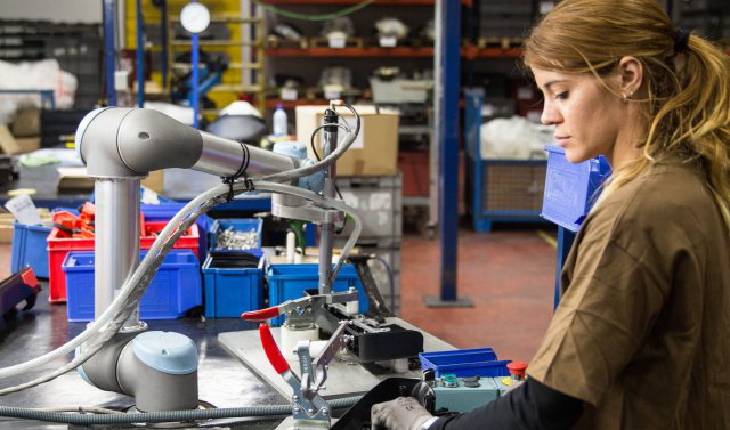Robots On Display
About six years back, if someone had walked through the annual China International Robotics Show held in Shanghai, they wouldn’t be much impressed. The robots on display were just copies of what the US produced. If they strolled through the expo in 2017, it would have given them a surprise. The technology was showing significant improvement. If they passed through the exhibition this year, it would stop them in their tracks.
The blueprint of the robotics industry in the country has completely changed, and it is all thanks to the Made in China 2025 initiative of the government. The plan was introduced four years back and is supported by the government to ensure the country becomes the leading player, globally, of industries such as:
- Robotics
- Medical devices
- Aerospace equipment
Read More About : President Trump: Something Has To Be Done About North Korea
Objectives And Plans
The primary objective of the initiative is to automate specific sectors of their economy. Namely:
- Automotive manufacturing
- Food production
- Electronics
 To achieve this goal, robots are needed, which is why the Chinese government launched the Robotics Industry Development Plan in tandem with the Made in China 2025 plan. The Robotics Industry Development initiative is a five-year plan that aims to manufacture a minimum of 100,000 industrial robots per year by the time 2020 rolls around.
To achieve this goal, robots are needed, which is why the Chinese government launched the Robotics Industry Development Plan in tandem with the Made in China 2025 plan. The Robotics Industry Development initiative is a five-year plan that aims to manufacture a minimum of 100,000 industrial robots per year by the time 2020 rolls around.
This plan is the reason why China is slowly surpassing the US and some of the other present world leaders when it comes to industrial robotics segment, check here for more info. The country has been running full tilt to grow its economy (through automation) and bring a paradigm shift into who becomes the world’s robot capital. Today, the nation is:
- Largest users of robotics on earth.
- The fastest-growing country in terms of robot use internationally.
The International Federation of Robots states that China has overtaken Japan, Germany, and America to become home to the maximum share of robots on the planet. Globally, the robot market in China is worth over$30 billion. At present, sales-wise China ranked at the top spot for industrial robots while America lags at number four. South Korea and Japan take the middle two places.
To give a reference for the pace at which China is overtaking the US, here are some statistics:
- Between 2010 and 2015, about 80,000 industrial robots were installed in Europe, Asia, and the U.S.
In the same span of time, China installed 90,000 of them, which is 1/3rd of the world’s entire industrial robot population! - It has been predicted by the International Federation of Robots that by the time this year ends, China will be responsible for 40% of all the robot sales in the world. In 2015, the share was only 27%.
- This massive challenge that China presents to the US in terms of industrial robots comes due to its aim to flip the script. While earlier the country imported industrial robots, now they are focusing on making them in the nation and introducing them in economic sectors to drive growth.
Is there a ray of hope for the United States?
The Chinese government wants over 50% of the robots sold across the globe should be made by Chinese companies and in China. With this lofty goal in mind, is there any hope for the US to reclaim its position as a leader. The short answer is yes, and mostly it is thanks to the initiative taken by Congress leaders in the field of collaborative robots.
and in China. With this lofty goal in mind, is there any hope for the US to reclaim its position as a leader. The short answer is yes, and mostly it is thanks to the initiative taken by Congress leaders in the field of collaborative robots.
One such program is by U.S. Rep. Haley Stevens which focuses on the use of cobots in manufacturing systems while human workers continue operations alongside. The aim of the program is to create learning content, especially for cobot technicians. Industry-driven and hands-on, the program will also help:
- Engineering technologists
- Robotic automation teachers and faculty
With programs such as these, there is still hope that in the future, the US industry will be able to compete against the dynamic Chinese market. How does the program achieve this massive goal? By creating employees that have a unique set of skills and are adept at new cobot technologies. These workers will fill the growing skills gaps that industries utilizing cobots are facing in the US.






